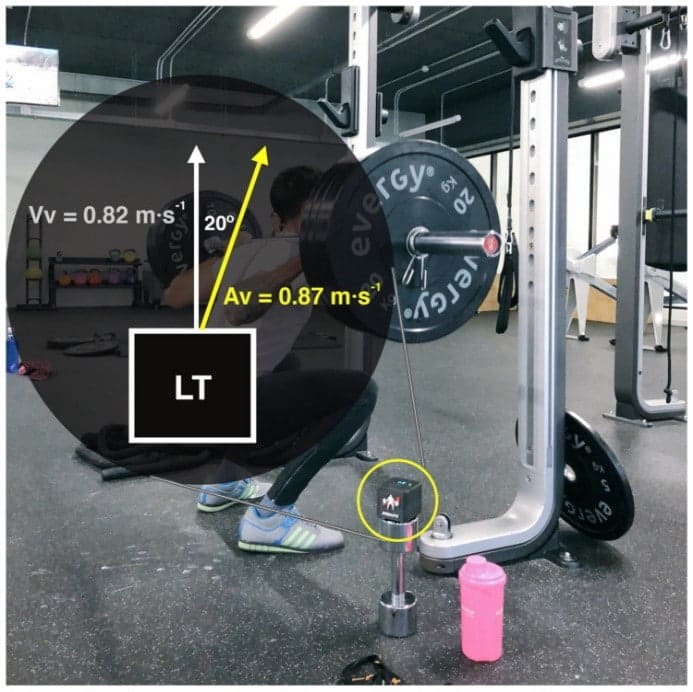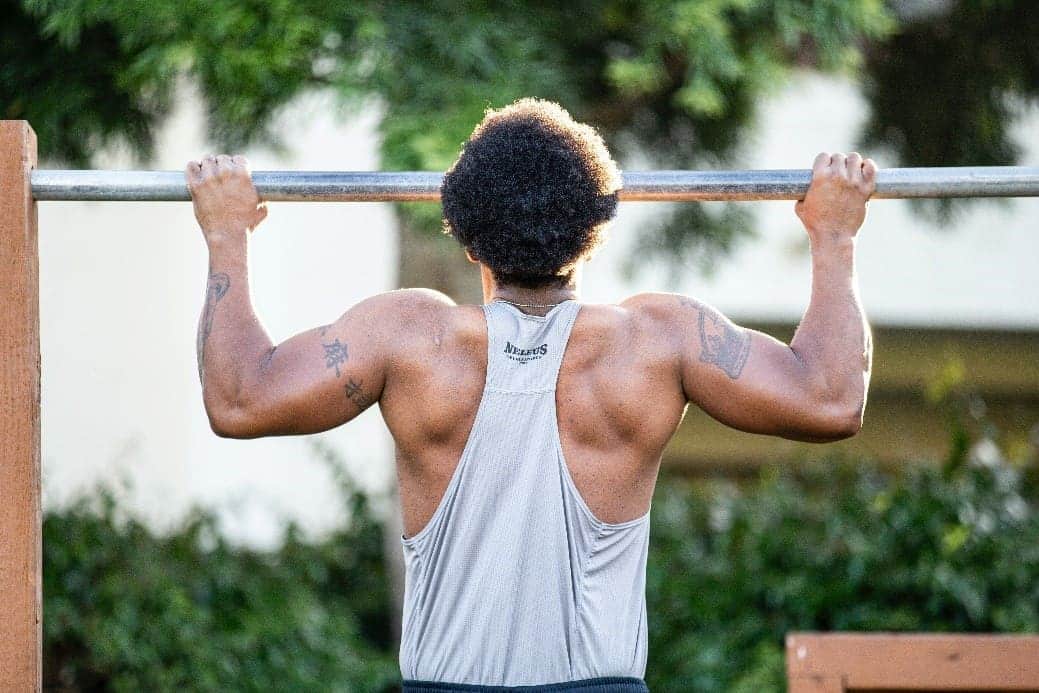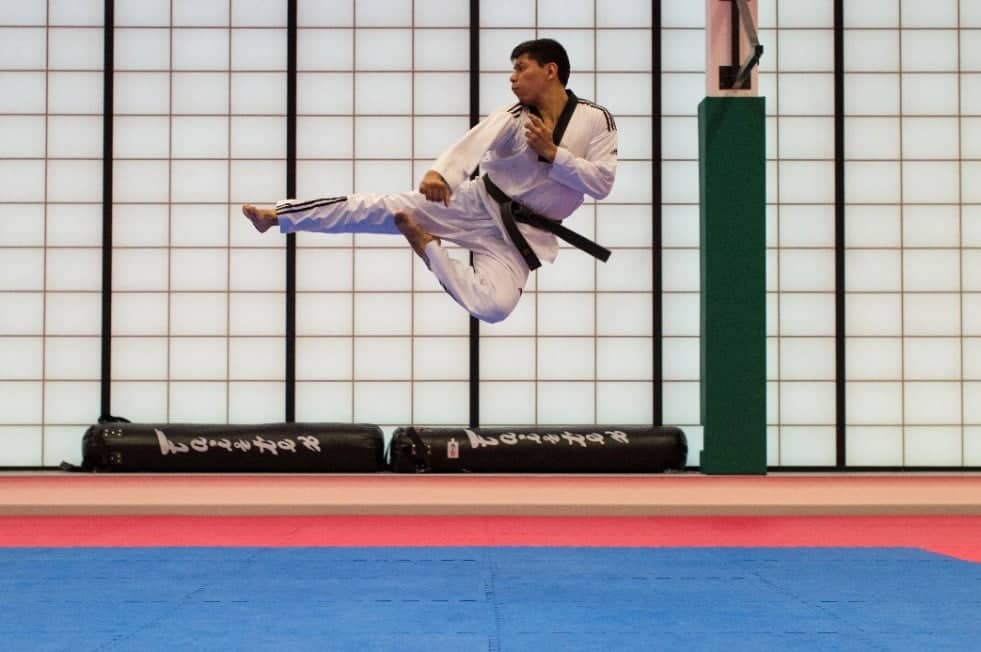3 de March de 2023
Uncategorized Velocity Based Training
Workload Management for S&C Trainers with VBT Technology
Workload for strength and conditioning coaches: why is it essential to work with VBT technology?

A strength and conditioning coach must administer the workload as precisely as possible to obtain maximum results with minimum fatigue. Velocity-based strength training (VBT) is the fastest and most optimal way we currently have to control whether the administered load is deficient, optimal or excessive (González-Badillo, Sánchez-Medina, Ribas-Serna, & Rodríguez-Rosell, 2022; Zhang, Feng, Peng, & Li, 2022). Thanks to advances in commercial devices for measuring speed, we have found devices such as Vitruve’s that are much cheaper than the gold standard, but measure the same thing.
A gold standard is the reference material used to obtain data on something we want to measure. In the case of running speed, 3D optoelectronic three-dimensional motion capture in 3D is one of the reference apparatuses (Weakley, J. et al., 2021). The problem with this material is its high cost, its difficulty of installation and transport, as well as its use with several athletes at the same time. To solve this, speed measurement devices such as Vitruve allow us to obtain technology that is just as reliable and valid as those gold standards for a much lower price, and that we can easily transport due to its small dimensions (Pérez-Castilla, Piepoli, Delgado-García, Garrido-Blanca, & García-Ramos, 2019; Weakley, Morrison, et al., 2021).
Workload for strength and conditioning coaches can be obtained objectively to analyze whether they are achieving the desired results with their program (Balsalobre-Fernandez & Torres-Ronda, 2021). It is pertinent to point out that when using movement velocity for training load regulation, as well as to evaluate the training effect, it is necessary to comply with an essential requirement: each repetition must be lifted at the maximum intentional or voluntary velocity (González-Badillo et al., 2022).
Major contributions of using movement velocity to regulate workload for strength and conditioning coaches.
VBT technology provides in real time the relative load we are lifting with respect to the maximum weight we can move (Weakley, Mann, et al., 2021). If we lift 100 kg in deadlift and the velocity measuring device shows us that we have moved them at 0.50 m/s, we will know that we are moving, for example, 80% of our load (Balsalobre-Fernández & Torres-Ronda, 2021). Depending on each exercise, there are general values that scientific evidence is collecting, or can also be measured individually, which is an advantage when it comes to knowing very approximately the load that we are moving at every moment and exercise.
Fatigue is one of the main variables that we need to control in training. With VBT technology we can know the degree of effort and fatigue that each series produces (Dorrell, Smith, & Gee, 2020). To carry it out, we will simply look at the loss of velocity that occurs in the series because as we do repetitions, each one of them costs us more and moves slower (Zhang, Feng, & Li, 2023).
Another contribution of the use of VBT devices for trainers is that it is possible to quantify the training effect occurring in each session (Zhang et al., 2022). To do this, it is sufficient to compare the velocity achieved against the same absolute loads during successive training sessions. If the same load is moved at a higher velocity, it means that this load has come to represent a lower %1RM and, therefore, that the maximum force applied to that load and, most likely, the corresponding 1RM value would have improved. On the contrary, if the velocity achieved against the same absolute load decreases in successive training sessions, the training effect would be negative.
One of the main factors that improves strength training, and which at first glance might be the least interesting, is obtaining immediate feedback on the velocity at which we are moving the load. When an athlete can see on a screen the velocity at which they are moving the load they can improve their performance, relative to the same training without that visual feedback (Weakley et al., 2020). Scientific evidence has found that such improvements in performance when using visual feedback from VBT devices occur because of increased motivation and competitiveness (Weakley et al., 2020).
Traditional 1RM vs. VBT technology to measure workload for strength and conditioning coaches

The most common indicators for measuring workload for strength and conditioning coaches are the maximum weight for one repetition (1RM) and the maximum number of repetitions at a given percentage of that maximum weight (%1RM). This way of administering load is useful to some extent, but has many limitations that have caused the scientific community to explore other strategies, which resulted in velocity-based strength training (VBT) (Held, Speer, Rappelt, Wicker, & Donath, 2022). This method is much less invasive and more optimal for regulating the workload in any athlete’s strength sessions.
VBT is by no means new, as German weightlifters were already using linear transducers in the 1970s (Richter, 1973). Since then, and especially in the last decade, research has been carried out to refine and improve load monitoring with VBT technology. However, many trainers still do not use this “new” technology, and continue to prescribe workouts based on 1RM and its percentages.
VBT technology gives us each day’s fitness for a couple of lifts
The maximum weight we can lift (1RM) changes every day. Sometimes it is not significant, but in many cases, there are drastic differences. Will you be able to lift the same weight one day after having slept badly and with a lot of stress, and in another day when you are rested and relaxed? Our lifestyle, and the accumulation of workouts influence the 1RM (Dorrell et al., 2020). Therefore, we would have to calculate it every day for it to be really accurate. The traditional method uses a lot of time and fatigue to know what 1RM we have, since we will have to adjust the loads until we get close to that maximum weight to check if it is the same or has been modified.
Linear transducers such as Vitruve’s can be used in the warm-up and with loads not so close to that 1RM. In a couple of lifts performed at maximum speed we will know our 1RM for that day, and from there we can prescribe loads according to the percentage of interest (Dorrell et al., 2020). With this VBT technology we have saved fatigue and time, while improving the quality and accuracy of the load our athletes will work with.
Evolution of our 1RM with VBT technology vs. the traditional method
Another advantage of VBT technology over the traditional method to obtain our 1RM is the way to check its evolution. To know if an athlete has improved with the traditional method, we will have to subject him to maximum loads and/or muscle failure with submaximal loads. This leads to fatigue we can’t afford and the risk of injury we have to avoid in the first place. The VBT technique doesn’t have to reach muscle failure or lift maximal loads, but we gain speed of execution while moving submaximal loads at the maximum possible speed. If that execution speed for a given weight has improved with respect to previous days or weeks, the load administered is being the correct one because the athlete has gained strength (González-Badillo et al., 2022).
Load-velocity profiling as a basis for managing workload for strength and conditioning coaches with VBT technology

Individualize with a load-velocity profile of your athlete
The first step in managing workload for strength and conditioning coaches is to create a load-velocity profile with VBT technology. Once we have it, it will serve us to work for an extended period of time. After that period, the coach will evaluate if it is necessary to repeat the protocol again to update it. The protocol is performed in a short period of time, but it is necessary to do it in each of the basic exercises with which we train: squat, deadlift, bench press, military press, hip thrust, pull-ups or seal row, among others. The steps to follow are as follows (Balsalobre-Fernández & Torres-Ronda, 2021):
- Perform a specific warm-up for the movement you are going to perform, for example, the bench press. Finish the warm-up with set number 0, in which we will move 20%-30% of our 1RM, or if we don’t know it, a load that we can easily move at a speed greater than 1.20 m/s.
- Select four incremental loads starting at 30% – 40% of 1RM and going up to 75% – 80%. It is recommended that the increments be similar, so we could perform the following loads: 35% – 50% – 65% – 80%, increasing by 15% of 1RM each time.
- Each of the incremental sets should be performed at the maximum possible speed. Failure to do so will result in failure of the load-speed profile. A couple of repetitions in the lighter sets will suffice, using only one repetition in the heavier set.
The Vitruve application will calculate your load-velocity profile based on the data you have been adding with the protocol. This way you will already have the tool with which you can calculate your 1RM and work every day. To do this, you must choose a standard load that you will perform at the end of the warm-up. Remember to always do it at maximum velocity for it to be valid. If that guide load moves at the same velocity, the 1RM will be the same. If the load, which will be the same, moves faster, the 1RM will be higher, so we will work with heavier weights. If the reference load in the warm-up is lower, the 1RM will be lower. The coach will have to evaluate if it is a significant decrease, which will indicate accumulated fatigue. In that case it may be interesting to modify the training in order not to accumulate more fatigue.
If an individualized load-velocity profile is not possible, use the scientific literature to guide you
Although the workload for strength and conditioning coaches is individualized for each athlete, there is often not enough time to measure each athlete’s load-velocity profile for each movement. The good news is that the scientific literature already has a lot of research to guide us to have such profiles without the need to calculate them in our athletes (Weakley, Mann, et al., 2021). The Vitruve application has integrated these calculations from the scientific literature and will give us results based on this data calculated with other athletes. An example of this is the following image in which we see the association between load and execution velocity in four basic movements: bench press, squat, deadlift and pull-ups.

Prescribing and tracking workloads for strength and conditioning coaches with VBT technology

Load of the day with which we are going to work
As we discussed in the previous section, the first thing we will do in the session will be to finish the warm-up with one or two sets with a fixed load to check our 1RM for that day. If the load moves faster it is because it is easier, which means that “we are stronger”. If the load moves slower, it is because it is heavier today, so by decreasing the maximum weight we can lift during the day, its percentages will also change. Imagine that you have set a 100 kg load in bench press, which is your fixed load, that is, it is the load that you know you will not fail, but it is not light either.
When you perform a repetition at maximum speed with those 100 kg, Vitruve’s velocity measuring device will show you how fast you have moved the bar. Based on that speed, the app tells you your 1RM for the day. Let’s assume your 1RM is 120 kg, which is what the app’s formulas have calculated based on weight and running velocity based on your individual load-velocity profile or based on scientific evidence. If the goal of the day is to work with a load of 80% of the 1RM, we will calculate 80% of 120 kg, knowing that our load to work today is 96 kg.
Maximum velocity of the series as the value around which the others revolve
We have finished the warm-up and we already know that we are going to work with 96 kg, which is our 80% of the 1RM for today. We load the bar and get ready to do sets and reps. The traditional method prescribes a fixed number of sets, reps and load, for example, a 5×5 with 80% of 1RM, regardless of what happens in the process. One day we may be more recovered and feeling good, and instead of doing five sets we could do some more. On the contrary, if we are fatigued or less strong, in the third or fourth set we would already be dragging a lot of fatigue and it would not be advisable to complete all the prescribed sets and repetitions.
With VBT technology we can prescribe an open number of sets and repetitions based on velocity loss within and between sets. For strength gains, studies have observed that low velocity loss thresholds (i.e., 10-20 % loss of the fastest repetition) can produce similar improvements in physical performance with significantly lower training volume than higher thresholds (i.e., 40 % loss or more) (Held et al., 2022; Pareja-Blanco et al., 2020). In this way, we will finish the series when there is a certain loss of velocity, whether it is three repetitions or six.
Continuing with the example of the bench press work at 80% of 1RM, which we have calculated to be 96 kg today, we will start doing repetitions. The first repetition is usually the fastest, but sometimes it is the second. If that faster repetition moves at, for example, 0.46 m/s, we will program the series with the velocity loss we are interested in. The less velocity loss we program, the less fatigue we will accumulate. That will depend on the time of the season, the amount of fatigue we are looking for, etc. Let’s imagine that in this case the maximum velocity loss will be 20% of the fastest repetition.
As the fastest repetition has been 0.46 m/s, we calculate 20% of that velocity, which is 0.092 m/s. These calculations are made directly by the Vitruve application without the need to use a calculator. We are simply explaining the process, but when training with Vitruve’s VBT device everything will be automated. The application will alert us when we do a repetition in which we have lost that 20% speed. At that moment we will stop the series, take an adequate rest and repeat, always bearing in mind that the training will be finished when we cannot do any repetition without that 20% of velocity, which can be in series three, five or seven.
Joaquin Vico Plaza
References
Balsalobre-Fernández, C., & Torres-Ronda, L. (2021). The Implementation of Velocity-Based Training Paradigm for Team Sports: Framework, Technologies, Practical Recommendations and Challenges. Sports, 9(4). https://doi.org/10.3390/SPORTS9040047
Dorrell, H. F., Smith, M. F., & Gee, T. I. (2020). Comparison of Velocity-Based and Traditional Percentage-Based Loading Methods on Maximal Strength and Power Adaptations. Journal of Strength and Conditioning Research, 34(1), 46–53. https://doi.org/10.1519/JSC.0000000000003089
González-Badillo, J. J., Sánchez-Medina, L., Ribas-Serna, J., & Rodríguez-Rosell, D. (2022). Toward a New Paradigm in Resistance Training by Means of Velocity Monitoring: A Critical and Challenging Narrative. Sports Medicine – Open, 8(1). https://doi.org/10.1186/S40798-022-00513-Z
Held, S., Speer, K., Rappelt, L., Wicker, P., & Donath, L. (2022). The effectiveness of traditional vs. velocity-based strength training on explosive and maximal strength performance: A network meta-analysis. Frontiers in Physiology, 13, 1573. https://doi.org/10.3389/FPHYS.2022.926972/BIBTEX
Pareja-Blanco, F., Alcazar, J., Cornejo-Daza, P. J., Sánchez-Valdepeñas, J., Rodriguez-Lopez, C., Hidalgo-de Mora, J., … Ortega-Becerra, M. (2020). Effects of velocity loss in the bench press exercise on strength gains, neuromuscular adaptations, and muscle hypertrophy. Scandinavian Journal of Medicine & Science in Sports, 30(11), 2154–2166. https://doi.org/10.1111/SMS.13775
Pérez-Castilla, A., Piepoli, A., Delgado-García, G., Garrido-Blanca, G., & García-Ramos, A. (2019). Reliability and concurrent validity of seven commercially available devices for the assessment of movement velocity at different intensities during the bench press. Journal of Strength and Conditioning Research, 33(5), 1258–1265. https://doi.org/10.1519/JSC.0000000000003118
Richter, G. (1973). A trainer device for objectifying the sport-specific speed ability and for training control in weightlifting. Theor. Prax. Leistungssports, 11, 241–263.
Weakley, J., Mann, B., Banyard, H., McLaren, S., Scott, T., & Garcia-Ramos, A. (2021). Velocity-based training: From theory to application. Strength and Conditioning Journal, 43(2), 31–49. https://doi.org/10.1519/SSC.0000000000000560
Weakley, J., Morrison, M., García-Ramos, A., Johnston, R., James, L., & Cole, M. H. (2021). The Validity and Reliability of Commercially Available Resistance Training Monitoring Devices: A Systematic Review. Sports Medicine (Auckland, N.Z.) , 51(3), 443–502. https://doi.org/10.1007/S40279-020-01382-W
Weakley, J., Wilson, K., Till, K., Banyard, H., Dyson, J., Phibbs, P., … Jones, B. (2020). Show Me, Tell Me, Encourage Me: The Effect of Different Forms of Feedback on Resistance Training Performance. Journal of Strength and Conditioning Research, 34(11), 3157–3163. https://doi.org/10.1519/JSC.0000000000002887
Zhang, X., Feng, S., & Li, H. (2023). The Effect of Velocity Loss on Strength Development and Related Training Efficiency: A Dose-Response Meta-Analysis. Healthcare (Basel, Switzerland), 11(3), 337. https://doi.org/10.3390/HEALTHCARE11030337
Zhang, X., Feng, S., Peng, R., & Li, H. (2022). The Role of Velocity-Based Training (VBT) in Enhancing Athletic Performance in Trained Individuals: A Meta-Analysis of Controlled Trials. International Journal of Environmental Research and Public Health, 19(15). https://doi.org/10.3390/IJERPH19159252/S1

